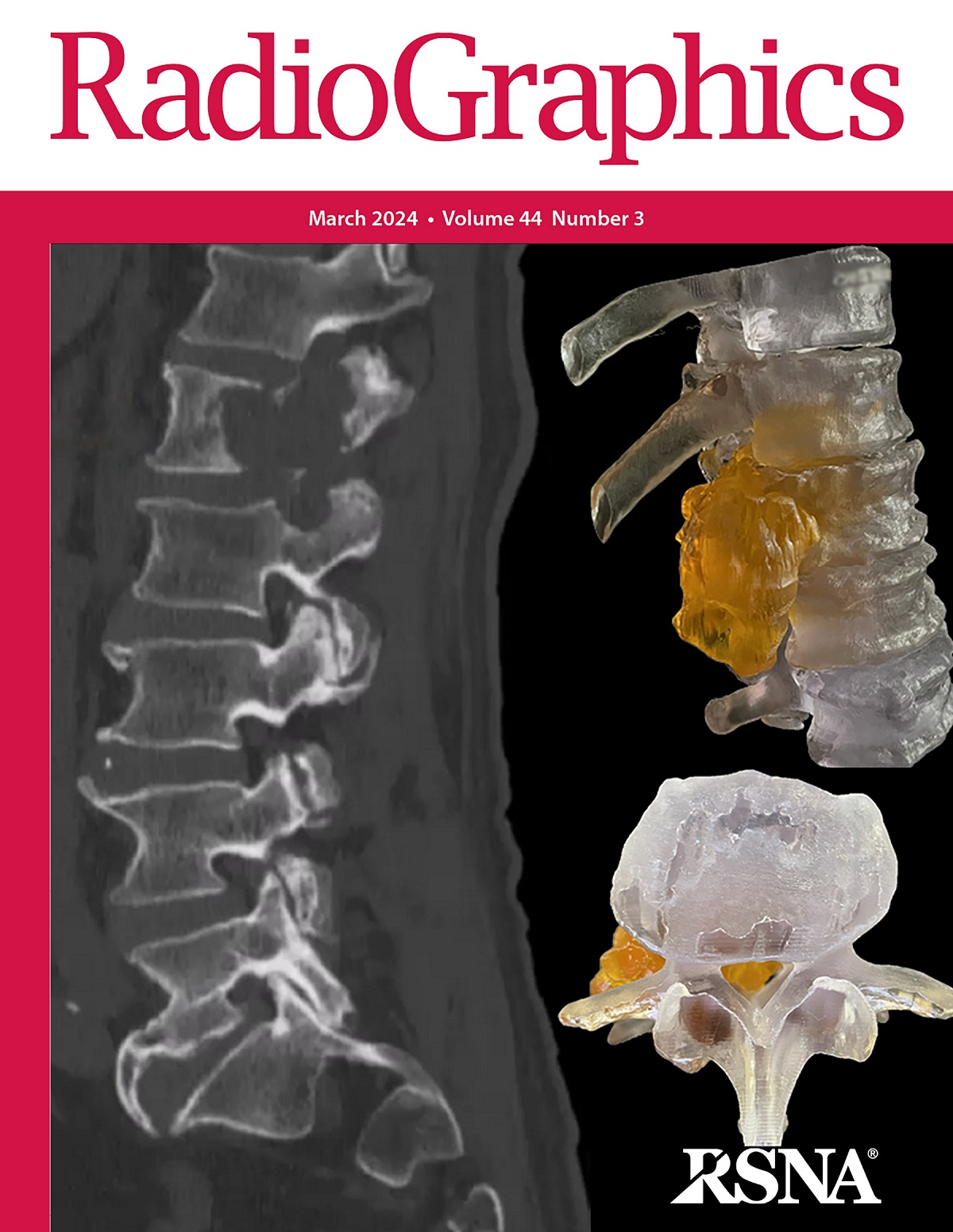Cardiac MRI in Heart Transplantation: Approaches and Clinical Insights.
Sandra Quinn, Roberta Catania, Vinesh Appadurai, Jane E Wilcox, Richard L Weinberg, Daniel C Lee, James C Carr, Michael Markl, Bradley D Allen, Ryan Avery
求助PDF
{"title":"Cardiac MRI in Heart Transplantation: Approaches and Clinical Insights.","authors":"Sandra Quinn, Roberta Catania, Vinesh Appadurai, Jane E Wilcox, Richard L Weinberg, Daniel C Lee, James C Carr, Michael Markl, Bradley D Allen, Ryan Avery","doi":"10.1148/rg.240142","DOIUrl":null,"url":null,"abstract":"<p><p>Orthotopic heart transplant (OHT) is a well-established therapy for end-stage heart failure that leads to improved long-term survival rates, with careful allograft surveillance essential for optimizing clinical outcomes after OHT. Unfortunately, complications can arise after OHT that can compromise the success of the OHT. Cardiac MRI is continually evolving, with a range of advanced techniques that can be applied to evaluate allograft structure and function. Understanding the unique features of cardiac MRI in OHT recipients, identifying findings suggestive of acute or chronic complications, and recognizing the limitations of this imaging modality are essential for accurate interpretation of cardiac MRI findings and subsequent clinical reporting. The authors address the anticipated postsurgical anatomy and functionality of the OHT. Emphasis is placed on the advanced functional and tissue characterization features that can be seen in the stable OHT recipient, including global longitudinal strain, late gadolinium enhancement, native T1 and T2 mapping, and extracellular volume fraction. Subsequently, the evidence for detection of acute cardiac allograft rejection with cardiac MRI comprehensive tissue characterization techniques and the role of quantitative myocardial perfusion for cardiac allograft vasculopathy screening are discussed, with reference to their comparative standard of reference screening tests, including endomyocardial biopsy, invasive coronary angiography, and myocardial rest and stress perfusion PET/CT. Cardiac MRI has been included in contemporary OHT management guidelines and therefore can be considered a complementary tool for allograft evaluation. The authors demonstrate the complementary role cardiac MRI can play in cardiac allograft surveillance, with clinical examples. <sup>©</sup>RSNA, 2025 Supplemental material is available for this article. See the invited commentary by Agarwal in this issue.</p>","PeriodicalId":54512,"journal":{"name":"Radiographics","volume":"45 2","pages":"e240142"},"PeriodicalIF":5.2000,"publicationDate":"2025-02-01","publicationTypes":"Journal Article","fieldsOfStudy":null,"isOpenAccess":false,"openAccessPdf":"","citationCount":"0","resultStr":null,"platform":"Semanticscholar","paperid":null,"PeriodicalName":"Radiographics","FirstCategoryId":"3","ListUrlMain":"https://doi.org/10.1148/rg.240142","RegionNum":1,"RegionCategory":"医学","ArticlePicture":[],"TitleCN":null,"AbstractTextCN":null,"PMCID":null,"EPubDate":"","PubModel":"","JCR":"Q1","JCRName":"RADIOLOGY, NUCLEAR MEDICINE & MEDICAL IMAGING","Score":null,"Total":0}
引用次数: 0
引用
批量引用
Abstract
Orthotopic heart transplant (OHT) is a well-established therapy for end-stage heart failure that leads to improved long-term survival rates, with careful allograft surveillance essential for optimizing clinical outcomes after OHT. Unfortunately, complications can arise after OHT that can compromise the success of the OHT. Cardiac MRI is continually evolving, with a range of advanced techniques that can be applied to evaluate allograft structure and function. Understanding the unique features of cardiac MRI in OHT recipients, identifying findings suggestive of acute or chronic complications, and recognizing the limitations of this imaging modality are essential for accurate interpretation of cardiac MRI findings and subsequent clinical reporting. The authors address the anticipated postsurgical anatomy and functionality of the OHT. Emphasis is placed on the advanced functional and tissue characterization features that can be seen in the stable OHT recipient, including global longitudinal strain, late gadolinium enhancement, native T1 and T2 mapping, and extracellular volume fraction. Subsequently, the evidence for detection of acute cardiac allograft rejection with cardiac MRI comprehensive tissue characterization techniques and the role of quantitative myocardial perfusion for cardiac allograft vasculopathy screening are discussed, with reference to their comparative standard of reference screening tests, including endomyocardial biopsy, invasive coronary angiography, and myocardial rest and stress perfusion PET/CT. Cardiac MRI has been included in contemporary OHT management guidelines and therefore can be considered a complementary tool for allograft evaluation. The authors demonstrate the complementary role cardiac MRI can play in cardiac allograft surveillance, with clinical examples. © RSNA, 2025 Supplemental material is available for this article. See the invited commentary by Agarwal in this issue.


